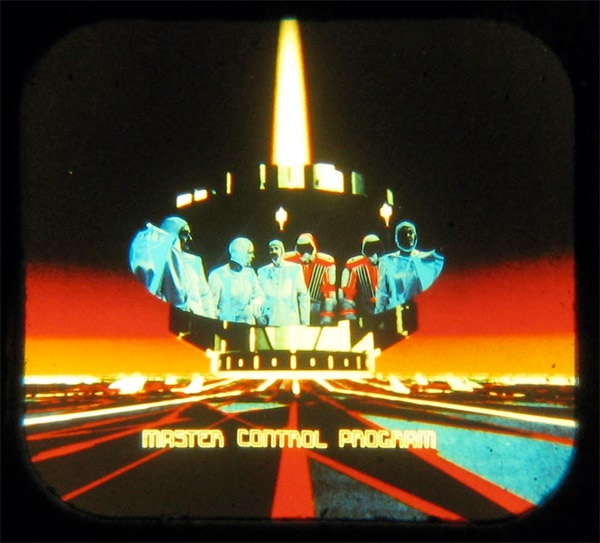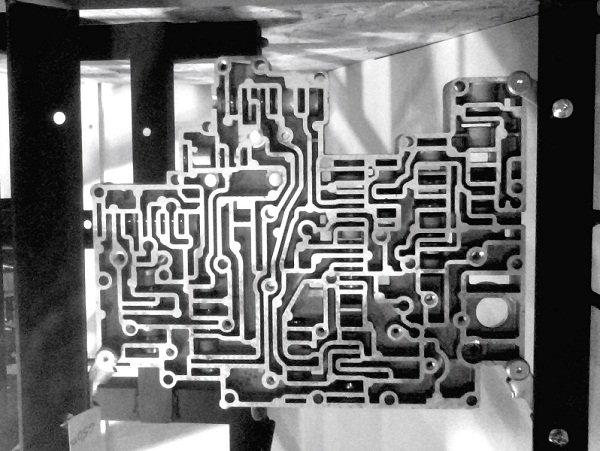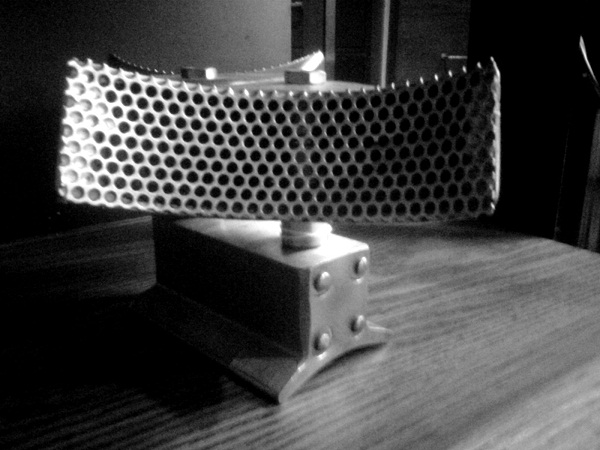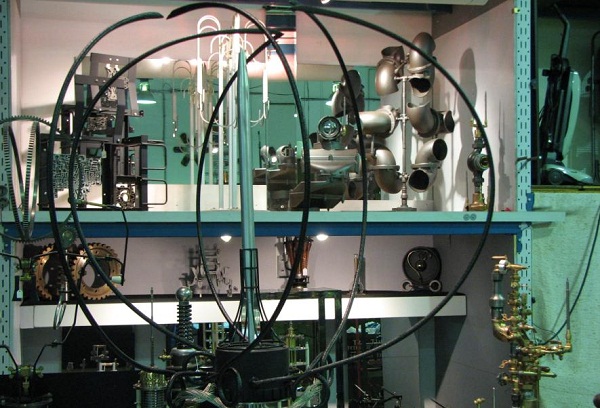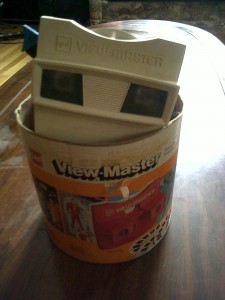
I’ve always been fascinated with stereo viewers. Once upon a time, when I was a wee lad, I visited my great-grandmother at her wee home in Jolly Olde England. It turned out that she had the same regard for immersive technology as I did- she had a Victorian era stereograph viewer and a sick collection of antique 3D stereo cards. Steampunk or what?
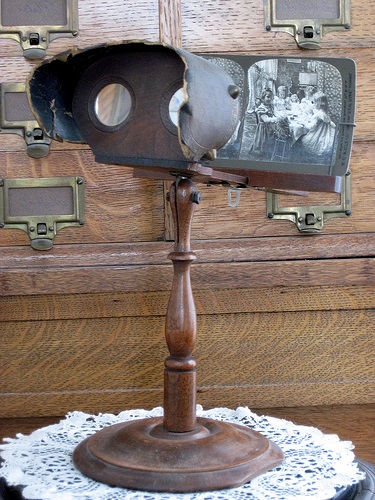 Yes, stereoscopy has been around for a long time. That contraption belonging to my great-grandmother was made of wood and had two glass lenses. It weighed so much I had to brace it on the floor, on top of a pillow, and lie in front, resting my head on my elbows. It was worth the effort. I could see ‘into’ the photograph and felt like I was transported into space and time. On a side note- I had this experience again decades later when I bought a heavily discounted (read: cheap) Nintendo Virtual Boy.
Yes, stereoscopy has been around for a long time. That contraption belonging to my great-grandmother was made of wood and had two glass lenses. It weighed so much I had to brace it on the floor, on top of a pillow, and lie in front, resting my head on my elbows. It was worth the effort. I could see ‘into’ the photograph and felt like I was transported into space and time. On a side note- I had this experience again decades later when I bought a heavily discounted (read: cheap) Nintendo Virtual Boy.
View-Master
This feeling of traveling outside of the body and experiencing a sense of virtual surroundings was shared by millions of kids and adults when the View-Master was first released in the late 1930’s. Here’s what Wikipedia has to say: “View-Master, since 1939, has been a device for viewing seven 3-D images (also called stereo images) on a paper disk. Although the View-Master is now considered a childrens’ toy, it was originally marketed as a way for viewers to enjoy stereograms of colourful and picturesque tourist attractions.”
Whatever the original intent was, View-Master has become synonymous with several generations of Pop Culture geeks and depending on your age, the sight of a black or red (or red and blue) View-Master conjures up images of Donald Duck, The Lone Ranger, or E.T., The Extra-Terrestrial.

Like most immersive technologies, educational and practical uses were developed. The U.S. Military used the View-Master as an aid in the identification of airplanes. The Gruber Company used the View-Master to develop human anatomy study guides. But for all of this, the best View-Master reels are 1960’s Batman and 3D stills from the original Tron film. Of course this is highly personal and your tastes may be different.
3D is back sort of…..although the last few years have seen North American releases of 3D blurays finally end (and no 3D televisions being manufactured), Europe continues to see new releases and these can be purchased online. This is a good thing. Sure I can dust off the bluray 3D version of Tron (Tron: Legacy). and still enjoy it’s jaw dropping immersion but it’s nice to know that the newer releases such as Wonder Woman 1984 can still be added to the collection.
Oculus Quest 2
If 3D is dying a slow death the same can’t be said for it’s direct descendant. Virtual Reality gaming and simulation takes immersion to an entirely other level: it provides a full 360 degrees of movement and viewing, complete with real world effects such as light and shadow movement and visual scaling. If you haven’t already tried VR gaming then you are missing out. But that’s a story for a future article.
For the Silo, Jarrod Barker.
